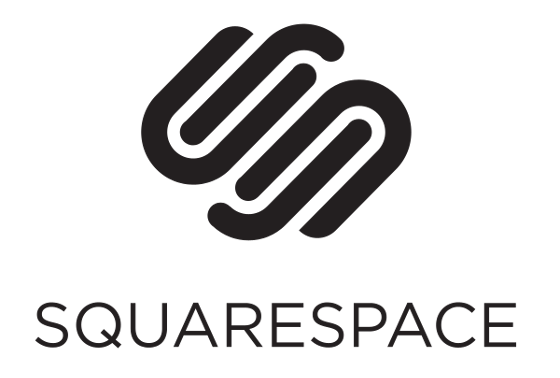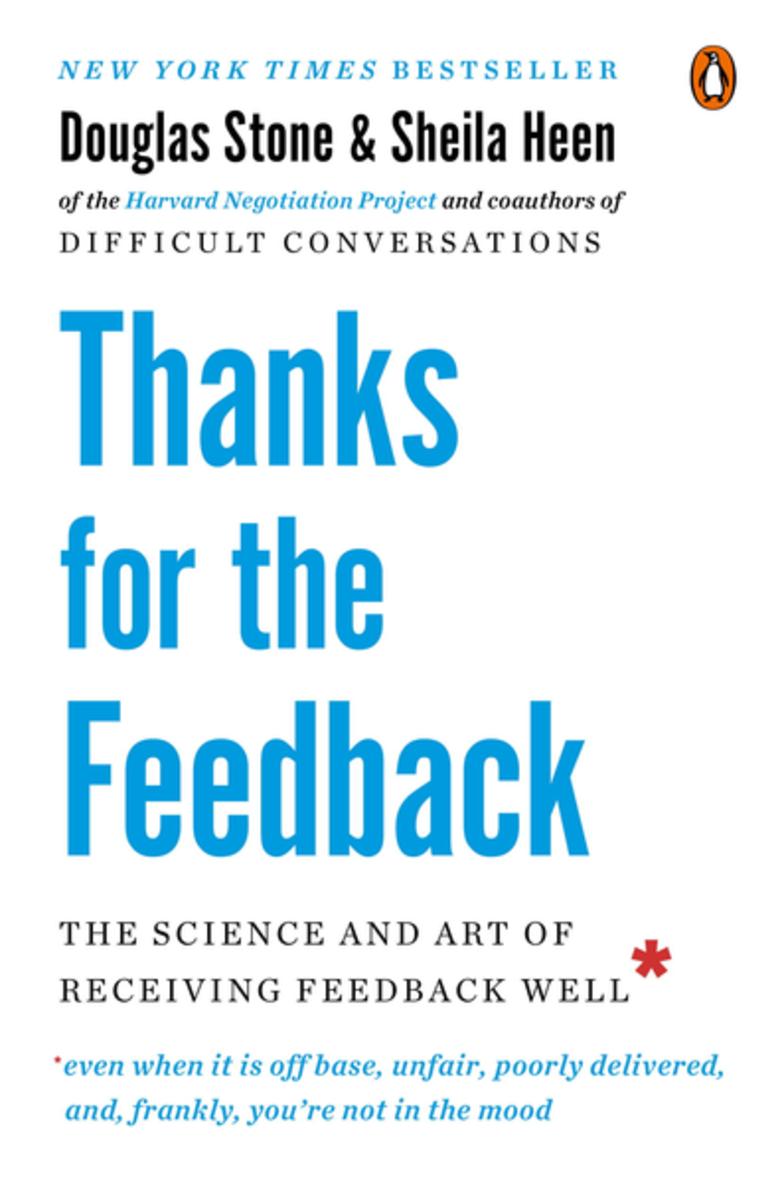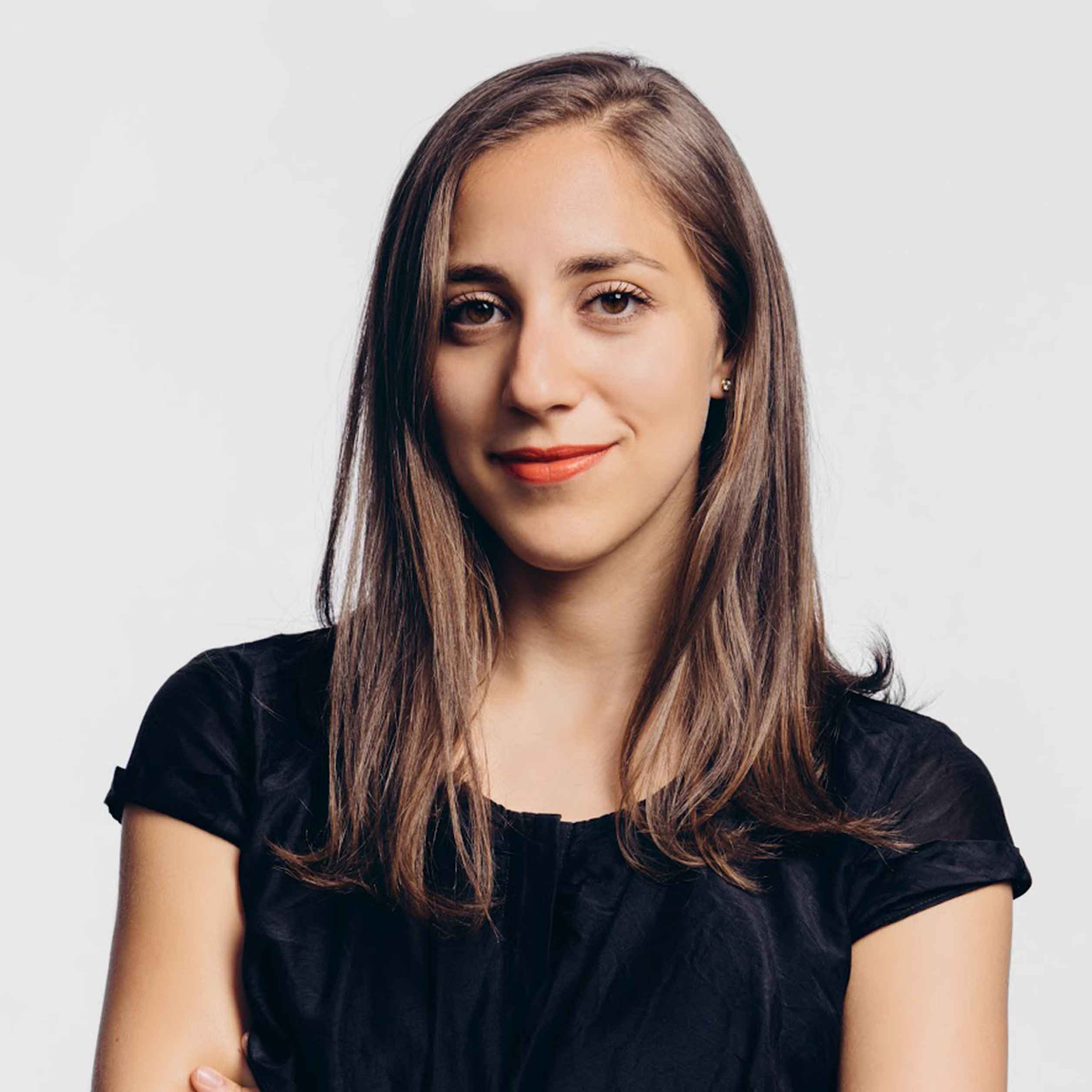
Focus on What's Really Important
Natalie: I'm Natalie Gibralter, Director of Product at Squarespace.
Suzanne: Natalie, I want to start with something really important, at least it's important to me, which is that you worked at KIND Snacks and I love a KIND bar. I think everyone loves a KIND bar. Maybe that's a result of you, you did social marketing. Have you had a million almond bars in your lifetime as a result?
Natalie: I've had my fair share. One of the things I did at KIND was start their field marketing program. We hired a team of 15 people across the US to demo KIND bars and have people try them out and so, in that process, certainly ate a lot myself.
Suzanne: Not only did you eat a lot, you're actually responsible for-
Natalie: For other people eating a ton.
Suzanne: Yeah. Okay, well these are the hard hitting questions that our audience wants to know. Alright, so it was Social Marketing Manager and was that kind of first gig right out of school or was there stuff before that?
Natalie: It was. I graduated from university, and lived in Argentina for a year where I worked for different nonprofits and did a lot of journalism and tried to figure out what I was excited about. Before I moved to Argentina, I actually interned for three months with a nonprofit called OneVoice which was the nonprofit that KIND used to be linked to in terms of their social mission. So 5% of the profits of KIND bars used to go to the PeaceWorks Foundations, of which OneVoice was part of, that worked to foster peace in conflict ridden regions.
It was not something that people sort of really quickly connected between, "Here are these bars that taste delicious and are good for you and 5% of the profits go towards peace in the Middle East." So I was actually hired by the CEO of KIND after having this internship at OneVoice to work to change the social mission of KIND from "peace in the Middle East" to "fostering kindness." And so Social Marketing Manager was a bit of a new role for us. To be fair, the team was fewer than 10 people at the time and so like any fast-growing startup, I was wearing many hats. We were doing a couple of million dollars in sales. By the time that I left, we were doing hundreds of millions. You can imagine that growth over that time period.
And so my main focus was around: how do we develop a social mission around developing kindness? There were many aspects of that but from a brand perspective and a product perspective and an organizational perspective, but also was able to do a lot of other things while I was there like working on partnerships, getting us into Starbucks, and things of that nature.
Suzanne: Very cool. You're doing all of this kind of nonprofit work and the idea that comes up in my mind is you're looking for a way to make an impact. So when you found yourself now on the commerce side, right? Because I think people wrestle with this a lot is: do I want to do something meaningful or should I go into business? And was there any reconciliation that you had to do for yourself at that time to make that switch? Or it was more seamless?
Natalie: What I care about is having social impact and I think that can take many different forms. When I graduated from university, nonprofit work was kind of the most obvious way that I interpreted that. But really quickly having the opportunity at KIND, which was a for-profit company, to develop a social mission and a social platform on this mass consumer brand and having impact in that way was really exciting. I actually left to start another nonprofit in the Middle East and ran that for a few years, ran my website on Squarespace where I felt really empowered because I was able to build this website that looked like I had paid someone $30,000 to build it for me. And in fact, I had done this all myself paying $12 a month. My board was super, super impressed. For me, it shed a lot of legitimacy and credibility on this harebrained idea that I had about how I wanted to change the world and I thought that that was really empowering.
We were able, in our first year, to raise $100,000 from major corporations to get this idea off the ground. When I think about the work that we do at Squarespace, which is a company that is not even like KIND, which considered itself a, "Not only for profit company," I still find the work that we're doing here to be incredibly socially impactful. We're democratizing people's abilities to get ideas off the ground and creating a level playing field for that in a really accessible way.
That's actually the thing that excites me about the impact that we're having here and it doesn't really matter to me that it's not a not-for-profit. That is sort of the way that we're achieving this. And in fact, it's just a question of what is the best model for the kind of impact that you want to have?
Suzanne: Okay. I mean, I have lots of questions about Squarespace but the one that's coming up for me is: so you started as a customer. Did that actually lead you here intentionally or that was just a happy coincidence that you had had all of this positive experience?
Natalie: That did lead me here intentionally. I was running this nonprofit in the Middle East, which I really was excited about and cared a lot about, and ultimately made the decision to move back to New York for personal reasons. My now-husband was here and it was just an unsustainable situation to be an ocean and a sea apart. And I think as anyone who runs a startup knows that when you have a baby in that form, it's really hard to figure out what do you do next?
For me, actually, Squarespace was the only company that occurred to me that I should look in to because I was so inspired by that product and what it had done for me so recently. I thought that it was just really cool, the opportunity that it gave me. I'm someone who gives credit where it's due, and I really feel like it helped me going in to a fundraising meeting or talking to a volunteer for people to feel like this is a real thing. It didn't even occur to me, at the time, to reach out to Squarespace directly because they were only hiring engineers at the time. But I happened to be connected to the COO at the time, who I hadn't even realized was the COO at Squarespace. I thought that he was doing BD at Etsy. And when we ended up meeting, it ended up being at the Squarespace office. He ended up introducing me to actually five different companies but called me the next day and said, "Listen, in the back of my mind, I've been thinking about hiring someone for business development at Squarespace and I think that you would be perfect for it." Because I had sat there for an hour and told him about how impactful the product had been in my life. It sort of was a coincidence and not that I ended up there, but I think sometimes things are meant to happen in that way.
So Squarespace wasn't hiring for product, they weren't hiring for business development at the time. Actually, when I applied, I didn't even know what product was even though I'd been doing it for years. One of the things I had done at KIND in developing the social mission there was, we developed essentially an online platform to encourage people to do kind acts that had a number of different iterations to it. That was really the first time that I built product without realizing that was what it was called. I just thought that I was problem-solving. Even in my nonprofit work, I developed product without realizing that was what it was called. But I think I also did a number of other things and so at the time, I was thinking that the thread between these really different things that I was doing was more around business development: getting into Starbucks, fundraising, developing teams of volunteers and things of that nature. That made sense to me.
The moment that I joined at Squarespace though, it became really clear that the way to help develop the business was through product here. I very quickly started doing that work.
Suzanne: Fast-forward six years. Well I don't want to fast-forward too much about six years, but I want to ask, for the benefit of our listeners because I never like to take for granted that everyone knows the products that we're speaking about, what is Squarespace?
Natalie: So Squarespace is a platform that helps people build brands. We're most well-known for being a website building platform. People use our product to build websites without having to know how to code. They start with a template, put in their own content, can really customize it and can make it their own. We also have a number of different product lines that have developed over the course of the years, sort of before and after the creation of the website. So in terms of buying domains, developing eCommerce capabilities for people who are selling online or running different parts of their business, and marketing tools. But our real focus is on helping people differentiate themselves and build their brands throughout all these different touchpoints.
Suzanne: Exciting. So who is Squarespace for then? Who is that ideal customer that finds your product and says, "Ah, this is the one I've been waiting for"?
Natalie: Our customers often tend to be people who really have a very strong story that they want to tell and are finding ways to be able to differentiate themselves in a way that they tell that story. Again, within Squarespace, it's really easy to make very customizable websites without having to have technical knowledge or figure out how to combine a lot of different plug-ins to make this work or look the way that you want it to look. I think the way that we often differentiate in terms of customer base is we have a lot of people who aren't selling commodity things or aren't building commodity businesses, but rather are doing things that are really different and need a platform to be able to express that difference in a very special way.
Suzanne: Yeah. I'm a Squarespace customer, actually. I didn't tell you that coming in because I didn't want it to skew how you would talk to me but I am a Squarespace customer and an advocate for it. One of the things, certainly, that I do appreciate is the ease of use. I work in tech. I mean, we build web products at my company but there is just so much value in being able to drop in and, as somebody who values design, and I'm looking around. These offices are beautiful. There is clearly a sense that aesthetic is woven in. That's intentional? Is that kind of part of the principles here?
Natalie: Completely. One of our values is making design accessible. We think it's such an important component of expression of ideas and one of the things that really sets people apart. Often it can feel like something that is expensive or too complicated or out of reach. One of our values is really making that accessible for anyone in any stage of their life cycle on any budget.
Suzanne: Wow. So you've been here six years. Was that the beginning? Were you here at employee number five type of level? What was the company like?
Natalie: Surprisingly not. Squarespace is actually 15 years old.
Suzanne: 15?
Natalie: Mm-hmm (affirmative).
Suzanne: Wow. Okay.
Natalie: And by the time I joined, there were 70 people in the company. Now we've grown a lot since then. We're about 770 people now but it wasn't the beginning of the company. I did join at a really interesting time where we were completely rebuilding the platform from scratch. I think that one of the interesting things in product is that it continues to evolve and the things that get you from point A to point B or point B to point C aren't necessarily the things that you get from point C to point D.
When I had joined, we had been growing but the growth had been fairly flat at the time. The ways in which you could build website had changed a lot as technology had changed a lot. We were launching what, at the time we called "Squarespace Six," which was a complete rebuild of the platform and was actually quite novel in terms of what were the kinds of ways you could build websites? And really visually engaging multimedia ways in a very all in one way that was no necessarily usual at the time, where you sort of had more traditional blogging platforms or portfolio platforms or website platforms, but it's really hard to do all those things effectively in one place.
Suzanne: One of the exercises that I do in some of my product workshops, with enterprise teams actually, is around product lifecycle management. We play "Pin the Product on the Lifecycle" and we use real world products as a way of opening up the discussion. And Squarespace is one of the ones that we use. I invite folks to say, "Is Squarespace growing? Is Squarespace in maturity? Is it in decline?" Where do you think Squarespace is in the product life cycle curve?
Natalie: I think Squarespace is growing. Growing fast. Which is really exciting and interesting for us. It's growing in a different way than it was six years ago. I think growing in a more mature way than it was. I think it's really just a matter of new ways to grow and new types of challenges that come with that, as opposed to necessarily thinking about whether or not you're actually moving forward.
Suzanne: That statement that you made is interesting to me. "Growing in more mature ways." And given that you've basically watched the company 10x in scale since you've been here, what does that mean for you to grow in a mature way? What does it look like, maybe?
Natalie: Yeah. There are multiple dimensions on which to answer that question.
One of the ways in which we're growing in a more mature way is in our understanding of who our user base is and also understanding that that user base is quite different than who they were a number of years ago. When we first started building Squarespace, and this was actually a really interesting, very explicit value when I joined, we said that we were building products for ourselves and scaling them to the masses.
If you think about that, you're assuming that the people who are using the product are just like you. We built for use cases that we understood really well. Our team here at the time were photographers, they were bloggers. Those were the things that we did really well because we were able to build a new gallery tool and experience very viscerally whether or not it actually solved our problem. That actually allowed us to scale really quickly in the beginning because there were tens of thousands of people who were indeed like us, who were having those same problems that we were solving.
But once you sort of grow past that, even if you're solving for photographers, there are photographers who are not like you. When you expand beyond into also different use cases, like eCommerce which was actually the first product that I worked on here, you might not actually understand those problems as intimately as you do some other problems. So I actually started working on product here quite organically because we were building an eCommerce feature and it was the first time we weren't building something for ourselves. We had to really understand who is this customer? What are their problems? And are we building the right things to solve for them?
With that, even just the way that we developed product, became quite different. That sort of also evolved as our user base grew, even in those cases as I mentioned like photographers that we knew really well, but we still had to understand the photography use cases that we didn't intimately understand before. For us, bringing user research into our product development process was actually something that came later in our process because it wasn't sort of an integral part of our process from day one. Actually, integrating product management into our process was something that emerged five years ago rather than something that we started with 15 years ago where we just had every engineer and designer intimately understanding this product and solving the problem that they understood.
So those are some of the ways in which we've developed quite a bit in the last six years, in particular.
Suzanne: Yeah. What's interesting is, I love that description, and I'm curious because ... To go back to product lifecycle management ... Inevitably, that crossing the chasm moment is that moment of embracing a more mainstream or a wider audience view, as you describe. Where a lot of companies can fail in those moments is alienating existing users in the attempt to go after the new user base, but not quite succeeding in creating the value for the new user base. And obviously that didn't happen here but ... Do you remember a tension of moving away from those photographers that you knew, those bloggers that you knew, toward these other kind of avatars that you don't know as well? And a feeling of losing the way or maybe even a resistance about going toward? Or was it all just, "We're excited to build stuff for people and now we're building stuff for these people too"?
Natalie: Culturally, there was more of an excitement rather than a feeling of pushback or tension, in terms of that expansion. The way that we've generally built products at Squarespace has been building systems and paradigms that we believe can extend to a number of different use cases, rather than just one. So our platform wasn't built in a way to just be able to serve photographers or just be able to serve bloggers. And so the idea of expanding was actually really, really exciting and I think that we've really tried to keep an eye on those key consumers that have used our platform traditionally and frankly, we've continued to grow and over-index in those verticals still today.
That being said, there's always going to be a new crop of platforms that solve in a very, very niche way for a particular audience. I think, like in any prioritization and trade off decision that you need to make in product, you need to essentially decide how niche do you want to go? How far do you need to go to be able to support these audiences while also remaining broad enough to be able to serve the larger user base?
Suzanne: Yeah. This is such a fundamental part of the growing journey as well. I've talked a lot about ... We're so obsessed with growth that I think we don't give credit where it's due to say it's perfectly admirable to create a niche business and own it and say, "I only want to be that." And Basecamp, for me, is such a great example of a company that recognizes in order to be broad, in order to be accessible, we need to be simple and flexible. And what that's going to mean is we're going to have customers saying, "Can you had xyz feature? Could you make it more usable for developers?" And you have to be okay with saying, "No. That's what Jira's for. Go try Trello for that." Having, I guess, that north star or that vision becomes really important, I would think, in those moments.
Natalie: Actually, for us, being really clear that breadth is really important for us from a strategic standpoint has been really helpful in terms of making sure that people are aligned as we're making those decisions around "How deep do we want to go?"
Suzanne: Right. You said before that product management sort of didn't really exist when you joined six years. Now you are the Director of Product. I imagine product very much exists. Can you tell us a little bit about how product is structured in terms of teams and process here? Let's start with teams, maybe.
Natalie: It took awhile for product to become a centralized function here. It actually started in a really decentralized way. We started with eCommerce and then it emerged in a number of different teams until we got to a place where we said, "Actually, this needs to be a centralized function that is consistent across all teams that every engineer and designer knows what to expect from this function." It really serves a very, very clear role. And we hire for that function consistently and we measure performance against that function consistently and organizationally, we manage that function in a very, very consistent way.
So today, every product team around a particular area of the product has a product manager, has dedicated engineers and product designers that are working on that specific area. So we have balanced teams that start and finish products together and really own that problem set holistically.
Suzanne: Can you, just for context, give us an example because thinking about Squarespace as a platform, sometimes the mindset goes to, "Well, that is the product." What are the products inside of that?
Natalie: Sure. We have a product team around our content management system, our CMS, which is broken up into smaller components of different aspects of the content management system that different teams own. We have a product team around eCommerce that is, again, broken up into smaller parts of that system. We have people who own essentially the core platform, so the ability to sell things on the platform. Then we have teams that own different end-to-end experiences of commerce. For example, we have a retail team that supports people who are selling physical and service goods on the platform and support things like our cart and checkout experiences for those types of users. We have a team that is working on donations and that type of eCommerce. As we launch different forms of eCommerce, we expand different product teams.
Suzanne: Around that?
Natalie: Around that, yeah. We have teams that are working on our marketing tools. We have teams that our working on our domains product. Again, that is split up into smaller teams that are owning different parts of that process. We also have teams that own cross-functional initiatives like internationalization or conversion and things of that nature, that are working more cross-functionally across these teams to make product improvements.
Suzanne: Do you know, off-hand, how many product managers are here?
Natalie: We have 16 product managers.
Suzanne: 16 product managers. What I think is so interesting is at scale, and I think it's safe to say Squarespace is at scale and continuing to grow as you say, dependencies. Right? You're talking about the necessity of organizing teams and running them in an organized way. You're talking about these self-contained pods. When you think about CMS and eCommerce, they’re really immeshed from a user experience perspective.
Natalie: Of course.
Suzanne: How does that get negotiated? Who gets to decide about the button, for example? You're nodding because you said, "Oh, this is the fight that we deal with every week." Someone's fighting over a button.
Natalie: The fights don't normally happen on a button. They're usually broader than that. This is really the core of where the tensions lie. I think that this is where, frankly, things evolve as you grow as an organization. The tools and methodologies that helped us to reconcile those dependencies and priorities when we were five teams, aren't the same tools and processes that helps us when we're 16 teams. Frankly, there are growing pains we go through on exactly this point.
Suzanne: How is the experience of being in product leadership, for you, different from the experience of being a product manager? How do you spend your time now as opposed to six years ago, four years ago, three years ago?
Natalie: Well, one way is really focusing on how organizationally can we get more things done? So to your previous question, I'm spending much more time figuring out how to do we structure the organization in a way that alleviates dependencies and creates more autonomy in teams when we sort of grow in ways where those new dependencies are pushing up against our ability to ship as fast as we used to be able to do. Spending much more time, obviously, on hiring and making sure that our team is really set up to succeed and grow as our organization is growing. Spending less time in the day-to-day details of every single product decision than I used to when I was actually in charge of the shipping of the actual details of the product.
Suzanne: Yeah. Is it hard giving up those things? Because I think there are probably a lot of folks in our audience who are maybe at that point where they're ready to step into leadership or looking to make that next move. I'm wondering what do you have to give up, in terms of experience, in order to get that next pay grade, that next title, that next area of responsibility?
Natalie: I think the biggest thing to give up is more temporary than long-term, which is if you're probably at the point where you're thinking about making this move, you're probably really good at what you're currently doing, which is you're really good as an independent contributor. You're probably really good at executing and on owning the actual products that are shipping. When you're moving towards scaling yourself in terms of helping other people be good at that, it's just a new skill set, right? There's a period at which you're trying something that is really new. In the same way that you're not probably going to get that the answers exactly right the first time that you build a product, you're not going to get it right the first time you're a manager and scaling yourself in that team.
So I think the biggest thing that you're giving up is that feeling of, "Oh, I totally know exactly what I'm doing and I'm killing it every moment." It takes some time. I mean, at least for me, it took really a year to feel like, "I am a good manager." And to feel the same level of satisfaction of success from the core function of what I was doing in the same way that I was in product. And also, I think in that process it sort of took me a year to feel like, "Yes, I can do this really well. Yes, this is actually the place for me to focus my energy and where I can be most impactful." I think there's also sometimes a process there to figure out is this the thing I want to do?
I think what you give up is the immediate confidence in what you're doing, but at the same time you're growing so much more.
Suzanne: Yeah. Well, and the product changes, right? Because based on what you're describing, the product now becomes the process. The product becomes the team.
Natalie: The team.
Suzanne: And the product becomes the culture-
Natalie: And the overall strategy.
Suzanne: Yeah. So we do a segment here on the show called, "Get the Job, Learn the Job, Love the Job" and I'd like to ask you what advice do you have to offer somebody who might be listening in that is either new in the product management role or is more experienced but in what I would call a "PM-adjacent role," but is kind of looking over at what the product managers are doing and going, "That seems cool. I want to be there." How do you get into product?
Natalie: From my experience, I came from a product-adjacent role. I came from doing business development into doing product and I think that the most important thing is to actually just demonstrate product thinking. Get close to who your users are and just demonstrate that you can solve their problems. I think if you have opportunities to actually talk to whoever that consumer is. And you can demonstrate this in a number of different ways. One is if you do already have product management in your company and you do have a product that you can work on, actually spending time with that consumer and developing a product brief. Showing that you have insight or an idea around how to have impact and address their needs, can be one way to do that.
Another way would be if you think about a user in your role in a different capacity. For example, if you're on a data science or analytics team and you think about your users as product managers or engineers that are making decisions based on the information that you have, can you productize a solution and demonstrate that product thinking in something else that you're doing that can help demonstrate that you have good product sense, that you think strategically about these problems, and that you can do the job?
Suzanne: I wonder if people who hear advice like that, and I think it's practical and it's right, if the next question or fear that comes up is: can I really take up permission to do that though? Right?
Natalie: Right.
Suzanne: Because it's one thing to say, "Yeah, just go out and talk to the customers." But I also know that some organizations, especially larger ones like this, have really clear boundaries. That's customer success terrain. You can't just get out of the building now. You have to go down the hall in the building and talk to customer success. How can you, I know I'm putting you on the spot a little bit here, but how can you feel okay to take up that permission, demonstrate that eagerness, but also not alienate your Director of Product or the other product managers who are like, "Hey, who's this person?"
Natalie: That's totally fair. I think you could potentially try to think about how do I do that on a smaller scale? And be creative and resourceful about it in the same way that you would if you were a product manager. Let's say you work for a consumer product and you just interviewed five of your friends that are using that product and still show that you can demonstrate, "I spoke to these people and here's what I learned from them and here are the actions that I took."
Or let's say you're in an enterprise tool, can you be resourceful with your network around people who work in companies that aren't necessarily clients but work in adjacent fields and interview them to show even just that eagerness of understanding what that problem is? I don't think you need to say that you're representing the company in that capacity, but I think that there are a lot of really simple ways on a very small scale that aren't threatening to show that you take the initiative and you have the structural thinking around those types of problems to be successful if you were put in a role where you were given that permission, that you would know what to do with it.
Suzanne: Yeah, I love those examples. And interviewing, especially, because I think you could spend your entire career as a product manager learning how to be a great interviewer, right? We all have to do it and if we're good, we do it. Most of us probably don't do it nearly as much as we should do it but asking the right kinds of questions is an art form onto itself. Great.
What about hard lessons learned, either for yourself as you were growing up in product, or where you've seen in the product managers that you manage where the theory of product management that people read about and study and the reality of how it works in a fast-paced organization ...
Natalie: One thing that is topical for me right now that's on my mind is around the difference between the theory and the practice of how to make decisions and get alignment around those decisions. Ultimately, product is about soft power, right? It's about getting people aligned around, "Here is the problem that we're solving" and shared ownership around what that problem is. And bringing people together to come up with the best possible solution.
But ultimately, you're still responsible for making sure that solution gets shipped and it's a good one. In that, I think there is a real dance between sometimes making hard calls to move things forward and getting consensus to getting people aligned around those decisions. If you're on either end of the spectrum of just making decisions without taking into account what people think, you're going to lose that soft power. You're going to, frankly, lose the ability to create good solutions there because you aren't bringing in your partners as partners for that solution.
But on the flip side, if you are too focused on making sure everyone's aligned and there's consensus building, it's really hard to actually move things forward a lot of the time. I think that is actually something that's really hard for people to get right and I have yet to find a product manager that gets that right all the time. I think that some people just in personality and nature, tend to skew more towards one place or another. Sometimes even what’s your strength sometimes becomes your weakness in relation to this.
I think that is just an area where every single product manager needs to be consistently thinking about how do I need to calibrate here in order to move this forward and make sure I have alignment in the right way? And as I'm working with different people and different teams, how do I need to shift where I am on that spectrum of making the calls, listening, bringing in compromising in some cases, in order to be able to move things forward?
Suzanne: Yeah. I love that you've shared that perspective. I think it's real. You have to have confidence but you also have to have empathy and you have to have good stakeholder relations.
Natalie: And humility.
Suzanne: Yeah. It makes sense too that it's very much on your mind because this goes back what I'm thinking about as leadership because it seems like it is now incumbent upon you to cultivate a culture of decision making, right? Presumably you have product managers and your 16 that are living on one end of that spectrum or another. So how to you, as a leader, then begin to ... You don't have to answer this by the way, this is just rhetorical. To be mediating on how do I teach decision making or encourage decision making and where do I put in definitive rules that say, "Consult me here but not necessarily here"? That's tricky. It's tricky, this Director of Product stuff.
What do you love about product? You found your way into it. You're not going anywhere anytime soon, I don't think. So why do this job and not something else?
Natalie: I love building things that solve people's problems and delight people. It's really exhilarating to see people actually use the things that you're building. Whether it be a snack bar or whether it be an online platform or whether it be a program.
Suzanne: I'm going to go to the airport at some point and see KIND bars everywhere and now I'm only ever going to think of you. Whenever I see them at Starbucks, I'm going to be like, "That's Natalie! She's left her print." You did make it. You succeeded in making an impact in ways you weren't even accounting for at the time.
Two last questions for you. The first is just about resources. Do you have any recommended reads or blogs or podcasts that you think are worth checking out?
Natalie: So many. I have to be perfectly honest that with an 8-month-old, I read less these days than I would like.
Suzanne: Fair.
Natalie: But a few resources that I really love and use a lot are the Google Ventures Sprint Book. That has been something that I've loved a lot and have had a lot of our team read and use. I think the key question there is figuring out what is the right answer, using that tool? I think it's a very powerful tool to use. I think along the lines of design thinking, you talked about what an important aspect design is both in terms of the product that we build here but also how we build our own product. I love the book "The Design of Everyday Things" and I think that's a really extraordinary book to read.
I also really love the way that sometimes books or articles can help facilitate conversations between teams that might be otherwise hard to have. A few examples that come to mind, we've had sometimes, teams that are struggling with figuring out the right way to apply stand-ups to their process. They're doing stand-ups but they're not working all that well. One article that I love to recommend there is, "It's Not Just Standing Up" by Martin Fowler. One of the things that I found that has worked really well with teams is when everyone reads this article about challenges that can occur in stand-ups, it can help sometimes unearth some of the challenges that they're having, or maybe even some of the challenges that are ahead of them in this really kind of low-risk way of talking about some of these problems that I've found really effective for teams to just very quickly implement change.
Another example of that is "Thanks For the Feedback," which is a book about the art of receiving feedback. For teams that are having difficulty having some of these hard conversations, having actually people together read this book and having that opportunity, a really safe space around, "Hey, can we do this differently and change our dynamic?" I think that literature can be really helpful in that way.
Suzanne: Yeah. More great practical leadership tips in the midst of practical recommended resources, so thank you. Last question. I feel like I want a sound effects, "Da-doom." Is there a personal or professional mantra or philosophy that you use to guide who you are in the world? Either in the world more holistically or certainly here as a leader at Squarespace?
Natalie: I wouldn't call it a mantra of sorts, but one thing that I think has certainly influenced me a lot has been losing my mother who passed away last year at an early age and who was sick for quite a while before that. I think one of the things that has made me always think about is that life is short and it's important to focus on what's really important and to not lose perspective of that. I think that is true both in my personal and professional life. What are the problems that you should really care about solving? Do the people that you care about know that you care about them, both at work and at home?
I think just continuing to make sure you always have that perspective around what's truly important.
Suzanne: Beautiful closer. Natalie Gibralter, Squarespace. Thank you so much for being a part of show.
Natalie: Thanks for having me.
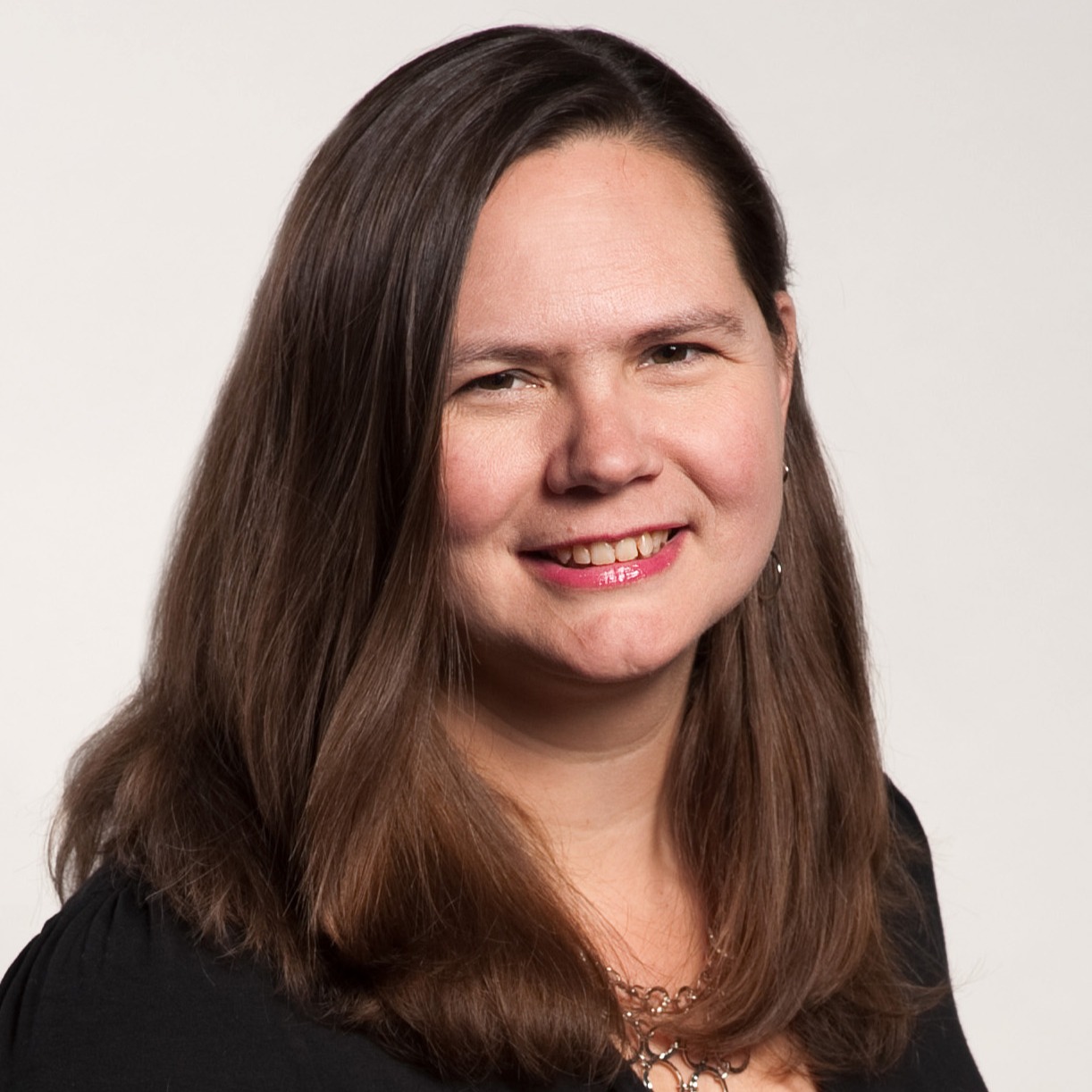
In this episode:
- Where do startups go wrong with implementing OKRs
- Can OKRs really scale for enterprise?
- What are pipelines and how do they change the way we think about product roadmaps?
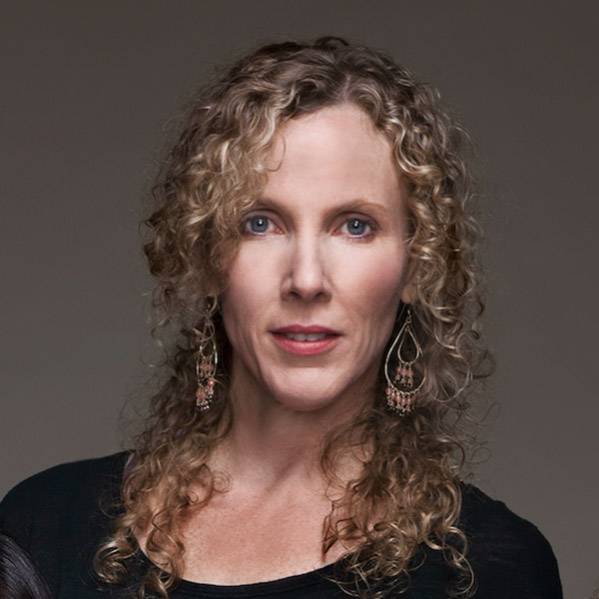
In this episode:
- From retail to product management
- Why relationship building is the number one required skill a product manager could have
- The value of having confidence with humility
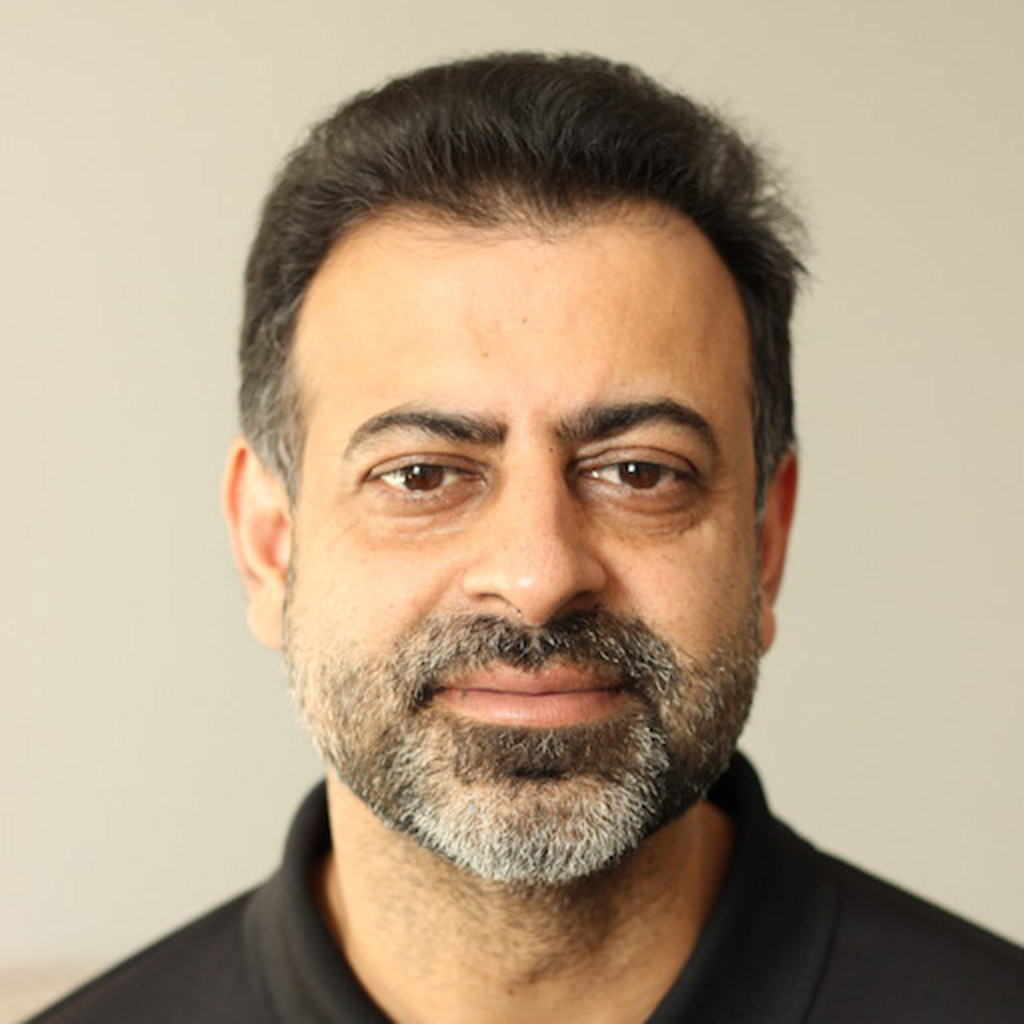
In this episode:
- Establishing a clear vision of your career path
- Using metrics to answer burning product questions
- What product managers can learn from biology
